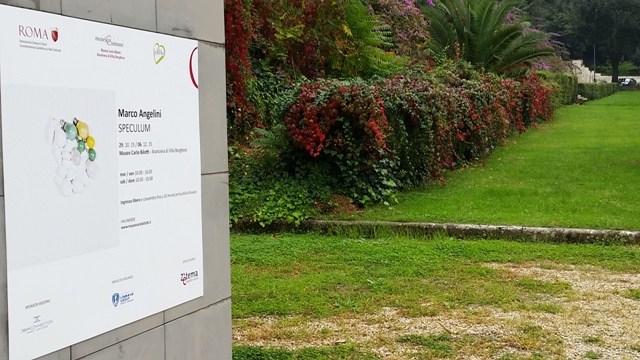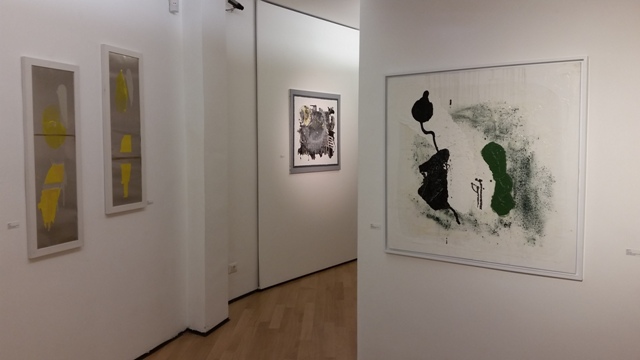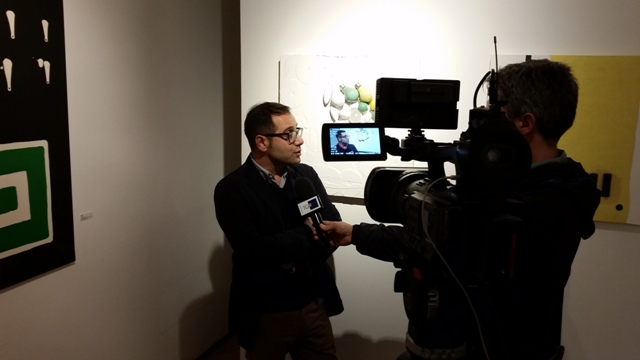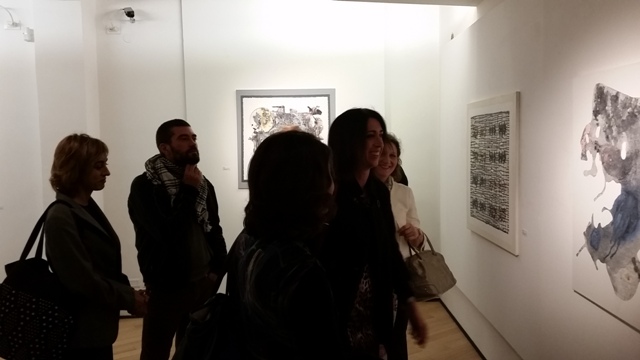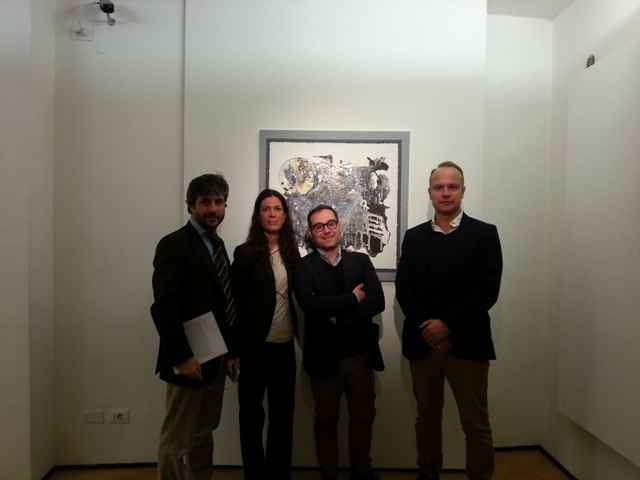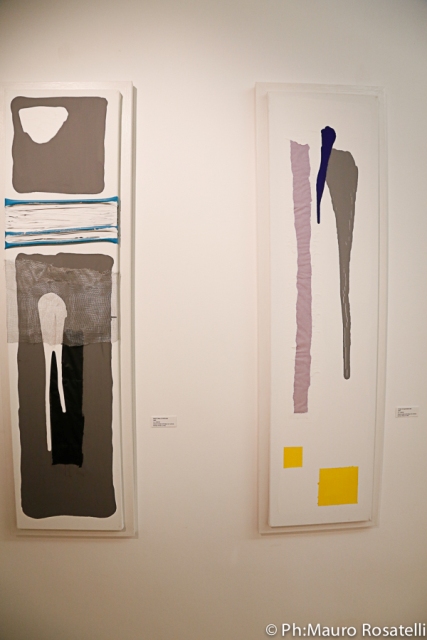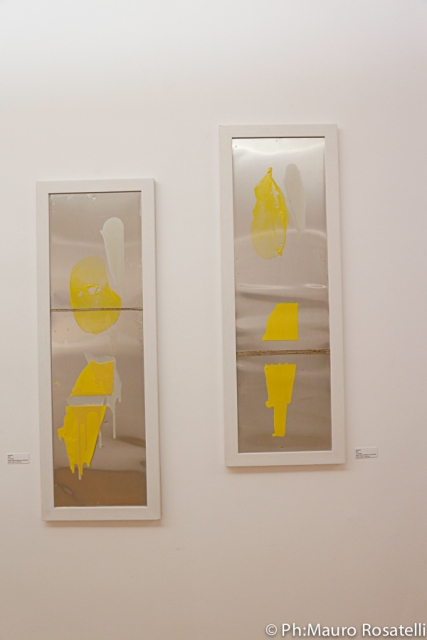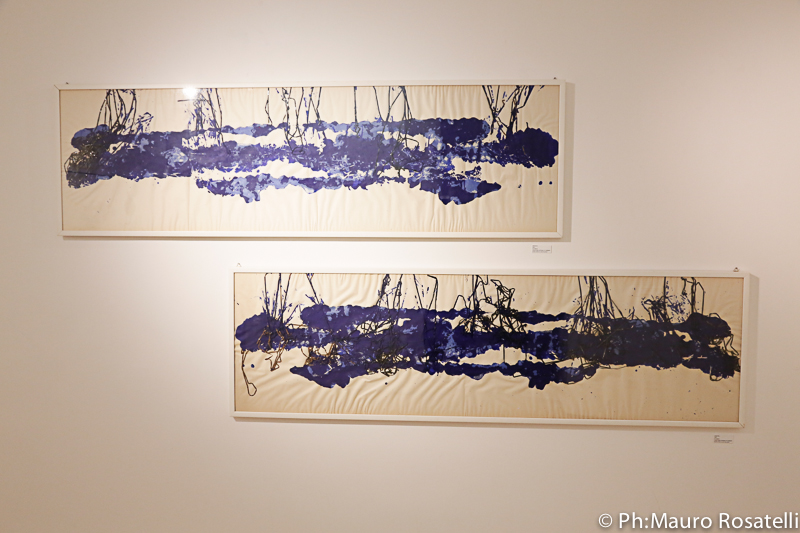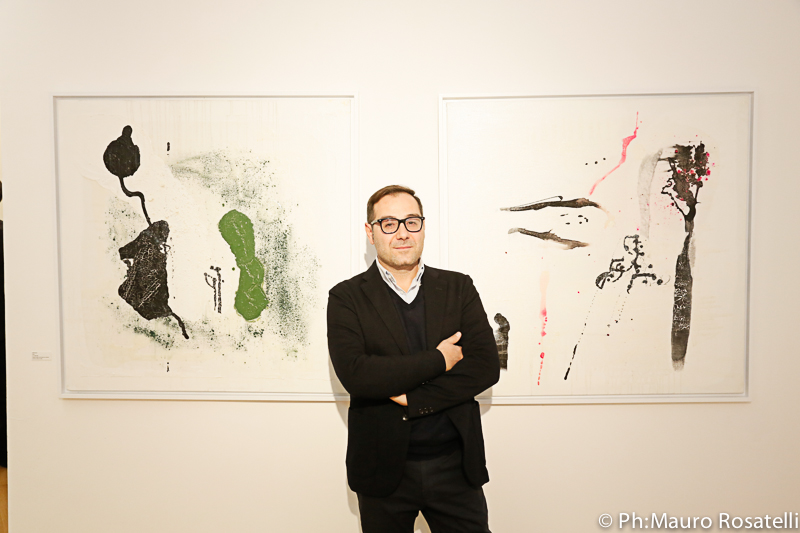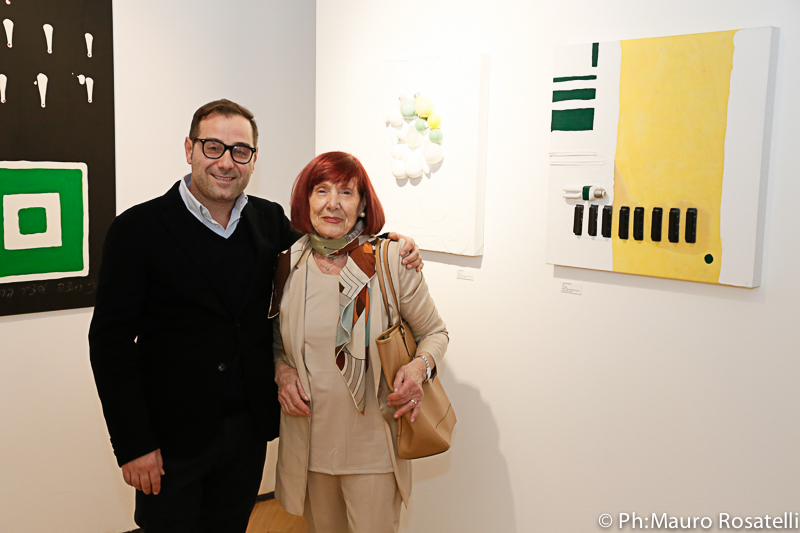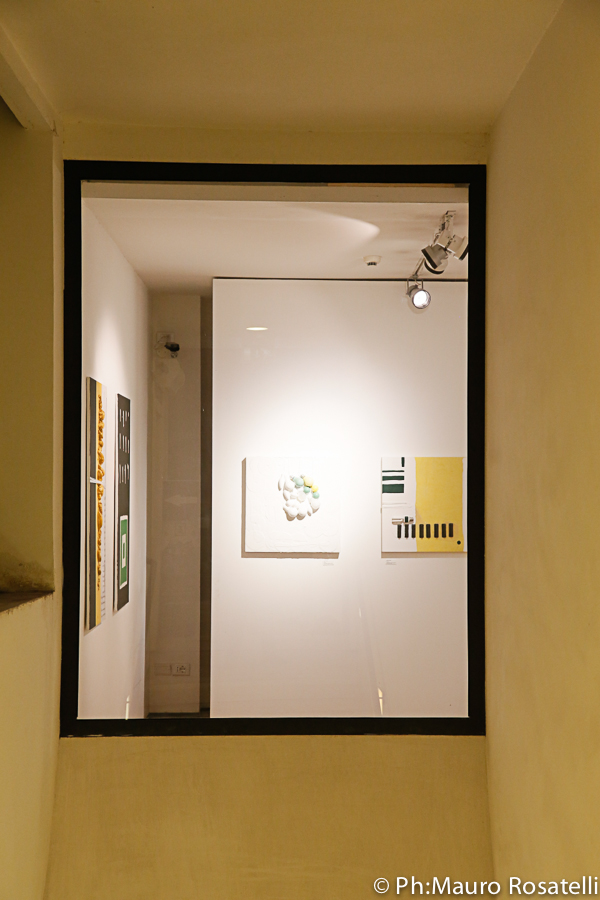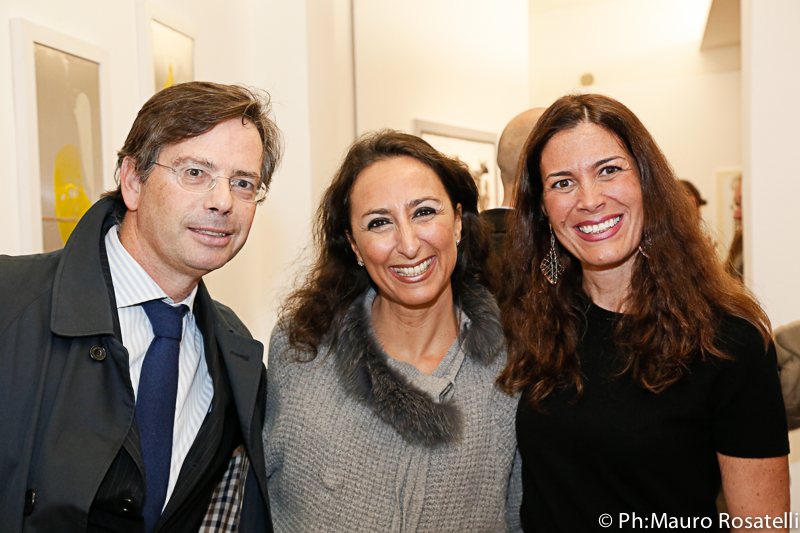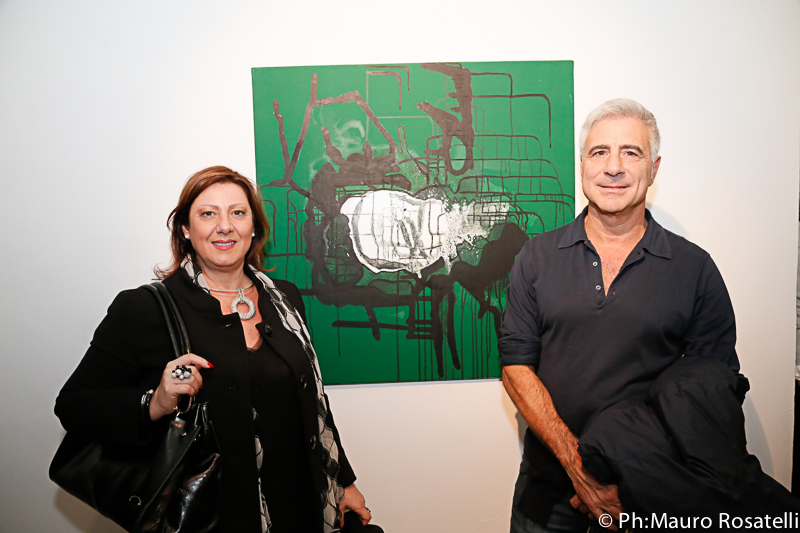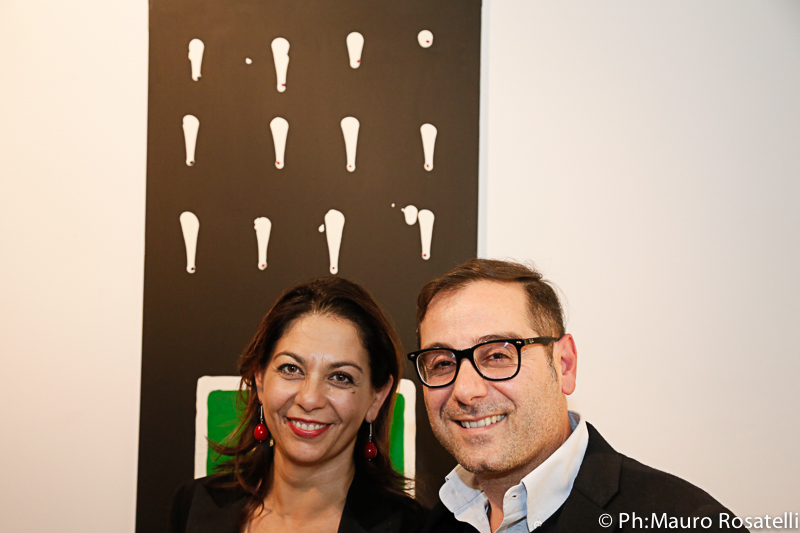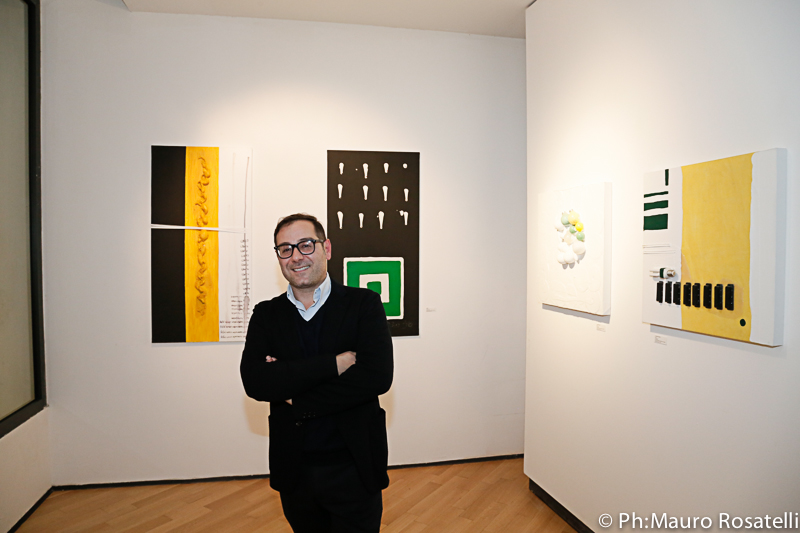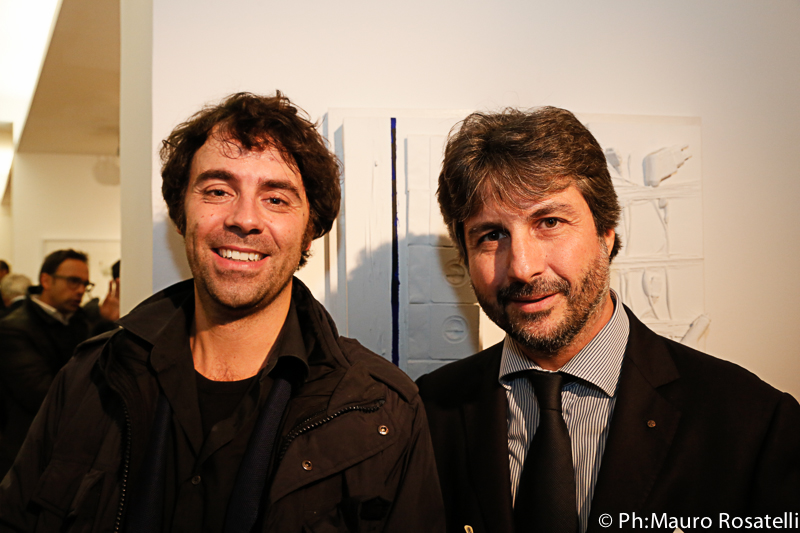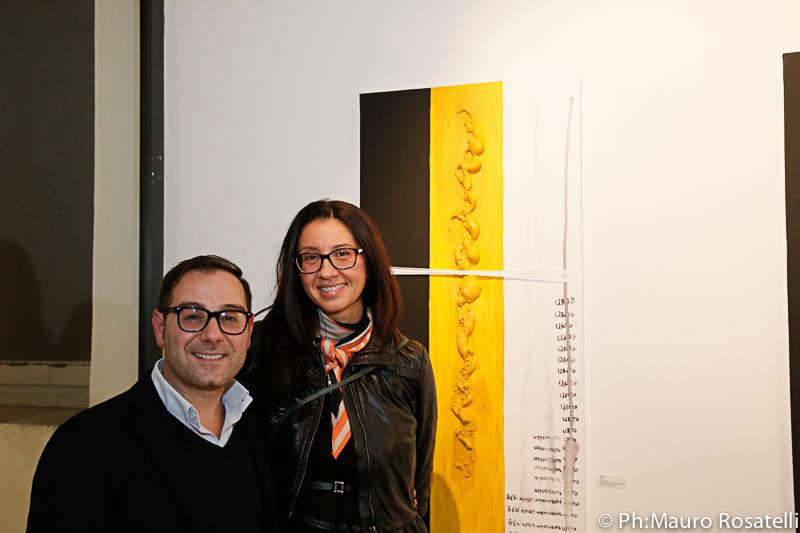
- 2024 – November – YAY Gallery – Baku
- 2024 – June – galeria test – Warsaw
- 2023 – November – The Others art fair – Turin
- 2023 – May – Festival del Tempo – Genova IT
- 2022 – November – Arte in Nuvola fair – Rome
- 2023 – March – Istituto Italiano di Cultura – Marsiglia
- 2022 – Oct-Dec – Zayed University & Corso Design – Abu Dhabi
- 2022 – October – Museo del Patrimonio Industriale – Bologna
- 2022 – March – Istituto Italiano di Cultura – Santiago del Cile
2015 – October – Museo Carlo Bilotti – Roma




SPECULUM: LA MATERIA E IL SUO DOPPIO
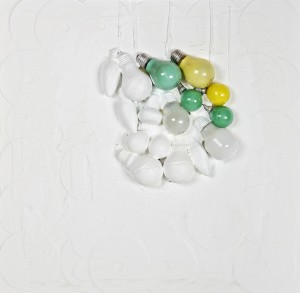
Museo Carlo Bilotti – Aranciera di Villa Borghese
29 . 10 . 15 / 06 . 12 . 15
Curatrice della mostra: Raffaella Salato
Concept e progettazione: Jan Kozaczuk
Comunicazione e ufficio stampa: Gian Piero Ventura Mazzuca
article in La Repubblica
SPONSOR MOSTRA SERVIZI DI VIGILANZA SERVIZI MUSEALI

![]()
![]()
SPECULUM: MATTER AND ITS DOUBLE
The matter is primarily identity, a “double” designed as an interpretation key through which Marco Angelini delivers his art to the public in a new Exhibition is at the same time featured as the granular synthesis of a path already travelled, as well as the beginning of a new cycle and lifestyle.
The artworks presented in this exhibition are twenty, realized in different times of the artistic career of Angelini, so that four of them are unpublished having seen the light in the end of 2014 and the first half of this year. In them, in particular, the theme of the “couple” fades into mutual calls between the various paintings, which aims to defy both awareness and sensation of the observer.
The rassemblement is in fact partly an artistic solution dear to the Artist, who had already experienced it in the London exhibition entitled “Restful Turmoil” in 2009 – of which can be found here two artworks – through the creation of several paintings in close dialogue each other, both in the used materials as well in their soiling topic.
However, unlikely of what had happened in this first experience of the London exhibition, in the most recent phase of production Angelini’s juxtaposition of tables is not predetermined nor premeditated: then, the peculiarity of this last but one exhibition in Rome (“The Matter and its double”, Galleria André, Rome, June 2014), from which this last takes its start,lies in the suggestive, also alienating, contrast among randomness (only apparent on a side) and harmony (or, on the other, dichotomy), that is a stark and alienating contrast is partly arisen by the author himself, partly a self-produced mismatch between his artworks one another and, once in pairs, between them and the world all around them.
Not for nothing, Angelini seems to be the disciple, having it so strongly interiorized, of Theodor Adorno’s theory, according to which Art is part of the world while at the same time it is completely taken out of it, since it unveils herself by her own contradictions with the aim to be “otherness.” Paradigmatic in this sense is one of the most important series of Angelini’s art history, “Urban Grooves” of 2010, in which – with the sociological approach clearly distinguishes the Artist – he doesn’t characterize different cities of the world rather what the urban context prints on the soul, that is what each city leaves inside us. This is the “other” way to read reality, as well as the empirical and practical experience: here “urban” means a state of mind, not a matter fact.
The paintings exhibited are performed in different times and with various styles and techniques, so that they are presented “in pairs,” following an always shifting red thread, hiding or revealing itself at the same time – coincidence or predetermination?, sometimes in the material used, sometimes in the expression form, colour, even in the context (the “casing”, as the same artist calls it, which plays a very important role in his artworks). Then, alongside the paintings are based on the theme of dripping in Pollock’s terms, which are apparently unrelated to each other or to those with a similar topic, as well as declined antithetically in colours or shapes, or else placed in the space (“Privacy” and “Detachment” – 2009), there are paintings speak to each other with reasons are independent from the intellect, and can be recognized in the sensorial experience, as well as others arise by a coupled interpretation with a specific issue (the combination of “Art and Science, Art and Medicine” of the Italian Pavilion in the World at the 54th Venice Biennale in 2011, by instance) by means of very different stylistic registers. All this, free of the risk of seriality, banal and uncritical, rather on the basis of the principle of mirroring, which is reminiscence/evocation without replication (not for nothing, the mirror – “speculum”, as a matter of fact – gives back to us our image “on the contrary”) triggers the dialectic without taking anything for assumed or concluded.
In this continuous dynamical process of “doubling” – Angelini, also a sociologist before than Artist, utters “don’t think it really matters what the viewer sees in the subject I wish to represent, rather that he sees something” – which cannot be never identical to itself, the identity issue at stake is the decisive material element rather, if it is not the true one. This is also apparent in the series of “hearts”: they dominate the artworks emerging strongly from aseptic depths, and in their different declinations are camouflaged and layered with a different matter without coalescing themselves altogether.
Recalling the poetic inspiration of Louise Nevelson, suspended among abstraction and surrealism, Marco Angelini features for his creations a variety of supports and recyclable materials which include (polystyrene, cardboard, plastic, aluminium, wallpaper), on which he plays on – by transferring his own personal brand – with natural pigments, acrylic adhesives, ink, dry bushes, resins, strings, tapes… even the “Crystal ball” children game he played long time ago! (Exhibition “A gravid Silence”, Warsaw 2009, from which here we present two artworks). His colours background is mixed either with blue ultramarine or the dazzling white on backgrounds, as well as the unlimited and alienating black of the “Israel” artwork, going through the metallic shades of a thriving aesthetic impact until to the clarion yellow spray, discovered during a journey to India.
Raffaella Salato
Translation by Romina Fucà
————————————————————————————————————–
SPECULUM: LA MATERIA E IL SUO DOPPIO
La materia come identità, il “doppio” come chiave di lettura: ecco gli strumenti attraverso i quali Marco Angelini propone la sua arte al pubblico, in un compendio di opere che vuole essere al contempo una sintesi del percorso già battuto e l’avvio di un nuovo ciclo, di sperimentazione espressiva ma anche di vita.
Le opere presenti in questa mostra sono 20, realizzate in vari momenti della parabola artistica di Angelini, tant’è che 4 di esse sono inedite, avendo visto la luce tra la fine del 2014 e la prima metà dell’anno in corso. In esse, in particolare, il tema della “coppia” sfuma in richiami vicendevoli fra le varie tele, che sfidano la curiosità e la sensibilità dell’osservatore.
Il rassemblement pare, peraltro, una soluzione artistica cara all’artista, che già nella mostra londinese del 2009, intitolata “Restful Turmoil” – di cui qui troviamo due opere – aveva sperimentato la creazione di più quadri in dialogo stretto fra di loro, sia per i materiali utilizzati sia per il soggetto che li anima.
Tuttavia, a differenza di quanto accadeva in quella prima esperienza sul suolo britannico, nella fase più recente della produzione di questo artista l’accostamento dei dipinti non è predeterminato all’origine o premeditato: infatti la specificità della sua penultima mostra romana (“La materia ed il suo doppio” – Galleria André – giugno 2014), da cui questa trae origine, sta proprio nel contrasto tra casualità (forse solo apparente) ed armonia (oppure, all’opposto, dicotomia?), un contrasto suggestivo e straniante che è in parte voluto dall’autore ed in parte autoprodotto dall’interazione fra le opere l’una con l’altra e, una volta in coppia, con il mondo circostante.
Non per niente, Angelini sembra aver fatto propria, e fortemente interiorizzata, la teoria di Theodor L.W. Adorno secondo cui l’arte è parte del mondo ma anche totalmente avulsa da esso, ponendosi al di fuori delle sue contraddizioni e dandone, così, una lettura “altra”. Paradigmatica in questo senso è una delle serie più significative della storia artistica dell’autore, “Solchi urbani” del 2010, dove – con l’approccio marcatamente sociologico che lo contraddistingue – Angelini rappresenta non tanto una caratterizzazione delle varie città del mondo, bensì piuttosto ciò che il contesto urbano di riferimento ci imprime nell’anima, ciò che ogni città ci lascia dentro. È questa la lettura “altra” della realtà, dell’esperienza empirica e sensoriale: qui, “urbano” é uno stato mentale, non uno stato di fatto.
Ecco dunque che i quadri presenti in queste pagine, eseguiti in periodi diversi e con stili e tecniche variegati, sono presentati “due a due”, seguendo un fil rouge che ogni volta cambia, nascondendosi o svelandosi – casualità o predeterminazione? – ora nel materiale utilizzato, ora nella forma espressiva, ora nel colore, ora persino nella cornice (“l’involucro”, così come egli stesso lo definisce, è molto importante nell’arte di Marco Angelini). Così, accanto alle opere accomunate dal tema del dripping (“sgocciolamento”) di Pollock ma apparentemente estranee l’una all’altra, o a quelle aventi un soggetto simile ma declinato in colori o geometrie antitetici, oppure diversamente collocato nello spazio (“Intimità” e “Distacco” – 2009), troviamo quadri che dialogano tra loro per ragioni che sfuggono all’intelletto ma si ravvisano nell’esperienza sensoriale, ed altri ancora che nascono accoppiati in quanto interpretazioni di una tematica specifica (il binomio “Arte e Scienza, Arte e Medicina” del Padiglione Italia nel Mondo alla 54ma Biennale di Venezia del 2011, ad esempio) secondo registri stilistici assai differenti tra loro. Il tutto, lontano dal rischio della serialità, banale e acritica, ma piuttosto ispirato al principio della specularità, che richiama/evoca senza replicare (non per niente, lo specchio – “speculum”, appunto – ci restituisce la nostra immagine “al contrario”) e che innesca la dialettica senza dare nulla per assunto o concluso.
In questo processo di “sdoppiamento”, che è sempre dinamico – infatti Angelini, che, come detto, è sociologo oltre che artista, sostiene che «ciò che veramente importa non è che lo spettatore veda nel quadro quello che io volevo rappresentare, bensì che ci veda qualcosa» – e, dunque, mai uguale a se stesso, l’elemento materiale è spesso decisivo, se non addirittura identitario. Ciò appare evidente anche nella serie dei cuori: essi dominano le opere emergendo prepotentemente da fondali asettici, e nelle loro differenti declinazioni si mimetizzano e stratificano con una diversa materia senza mai fondervisi del tutto.
Ricordando in parte la poetica di Louise Nevelson, sospesa tra astrattismo e surrealismo, Marco Angelini utilizza per le sue creazioni supporti e materiali spesso di riciclo (polistirolo, cartone, plastica, alluminio, carta da parati), sui quali poi interviene – imprimendovi il proprio marchio distintivo – con pigmenti naturali, colle viniliche, inchiostro di china, arbusti essiccati, resina, spago, nastri di audiocassette, lampadine e prese elettriche… persino il «Crystalball» con cui giocava da bambino! (mostra “Silenzio gravido” – Varsavia 2009, di cui qui troviamo 2 opere). Il tutto, dominato dal colore, che sia esso il blu oltremare prediletto oppure il bianco abbacinante di tanti sfondi, o ancora il nero assoluto e straniante dell’opera “Israele”, passando per le tinte metalliche di grande impatto estetico e per lo squillante giallo, scoperto durante un viaggio in India.
Raffaella Salato


